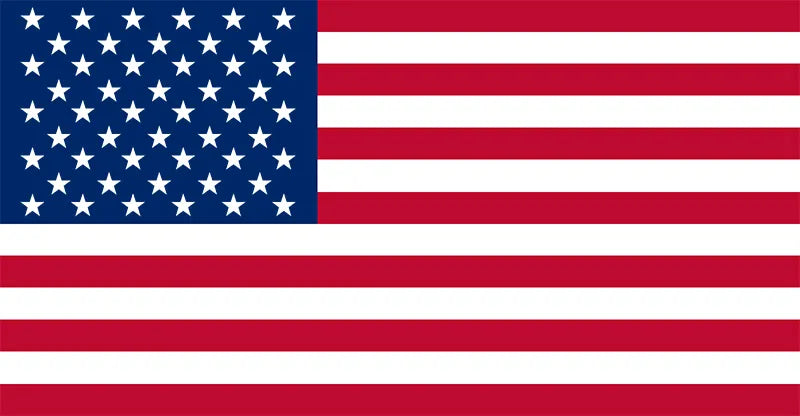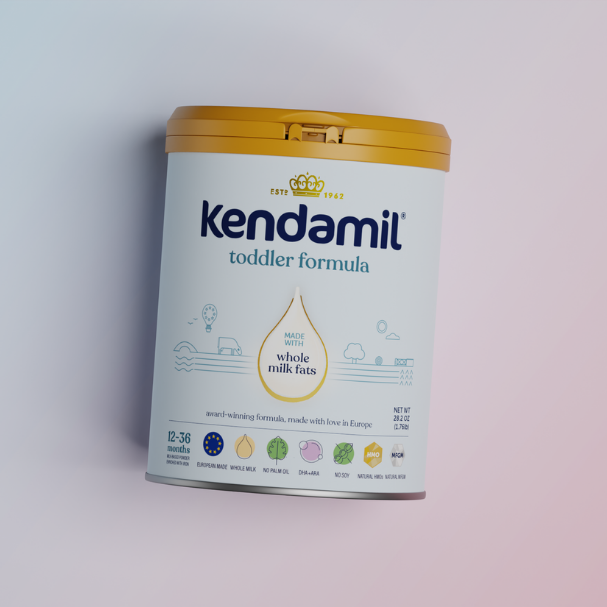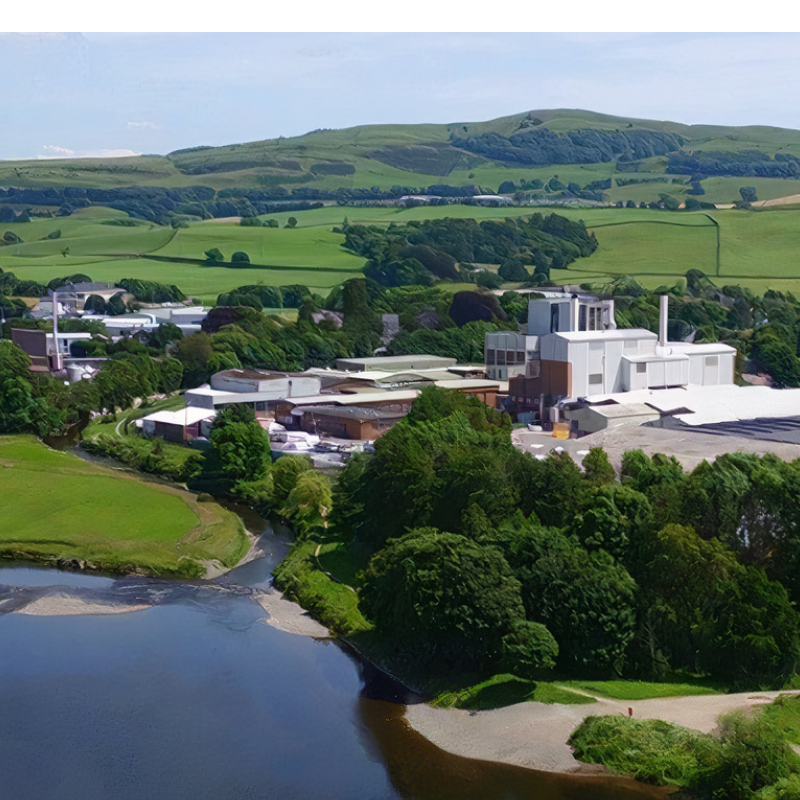You may have heard a whole lot of talk about what makes Kendamil's recipe so unique.
Let’s dive into the benefits of whole milk to understand why more parents across America are choosing Kendamil than ever before.
What is baby milk made from?
Breastmilk is undoubtedly a wonder of nature, designed to cater to the evolving needs of a growing baby. At every stage of their development, breastmilk adjusts its composition to provide the perfect balance of carbohydrates, proteins, fats, and an array of other vital nutrients like amino acids, enzymes, and hormones. The complexity of breastmilk is mind-boggling, as it also contains millions of live cells, vitamins, minerals, and antibodies that work together to protect and nourish your baby. Even today, scientists continue to discover new and amazing things about breastmilk and how well it can nourish our babies.
While breastmilk is often the first choice for infant nutrition, it's not always possible for every family. Fortunately, baby formula can serve as safe and nutritious option. In Europe, baby formula production is highly regulated, and all formulas are formulated using a similar combination of carbohydrates, proteins, and fats in compliance with strict European Union (EU) guidelines. However, the source of these ingredients can vary between brands, leading to slight differences in nutritional content.
What role does fat play in breast milk and baby formula?
Did you know that almost 50% of the calories in both breast milk and formula come from fat, providing little ones the energy needed to support healthy growth and development.
Fats are an important source of essential fatty acids (EFA), which are used by the body as building blocks for growth, as well as playing a role in the absorption of a number of fat-soluble vitamins like vitamins A, D, E and K.
Mammalian milk fat is far closer to naturally resembling the fat profile of human breast milk than vegetable oils, plus it has naturally occurring short and medium-chain fatty acids, which can be easier to digest. These fatty acids are absent in vegetable oils (with the exception of coconut and palm oil). Most formulas use a blend of vegetable oils as the primary source of fat in their recipes - typically Palm Oil, Sunflower Oil, Rapeseed Oil, Safflower, Soy and Coconut Oil as common oils.
What does Kendamil do differently?
Kendamil is the only European brand that uses whole milk recipe in the US. Our farm-fresh milk arrives onsite at our factory from our trusted farms in liquid form. This means the milk processing begins at our factory, which is not common practice in the industry as most companies receive already processed dried milk powder.
As such an essential ingredient, we take care to ensure our milk is sourced from the best farms. We work with over 220 Red Tractor Certified farms, which allows us to trace where our milk comes from and be confident that the welfare of our animals is up to scratch.
These farming practices also have some incredible benefits for the milk; grass-fed Jersey cows produce milk that is higher in certain nutrients like fatty acids, vitamins, and minerals.
What are the benefits of Whole Milk?
The most significant difference for us is that using whole milk provides an essential source of fat, whereas other brands use 100% vegetable oils for the fat source in their recipes. This means we’re able to avoid the use of Palm Oil completely and top up instead with a blend of essential fatty acids from Sunflower, Rapeseed, and Coconut Oil instead. Avoiding Palm Oil, which is linked to deforestation in the rainforest, is a huge part of our brand's sustainability mission.
There are also a number of naturally occurring nutrients that are retained by using whole milk rather than just skimmed milk powder. Cows milk contains naturally occurring Milk Fat Globule Membranes (MFGM), a complex mixture of fats, proteins, and carbohydrates that forms a protective layer around the fat globules in milk. It is uniquely found in mammalian milk, including breastmilk, and by using whole milk, we can retain this in our formula.
On top of all this, using whole milk is what gives our baby milk its creamier texture and richer flavor. It is so good our Founder, Ross, has even been known to use it in his coffee from time to time!
So if cows produce natural whole milk fat rich with nutrients, why do other brands skim the (milk) fat? Great question! The main reasons are to provide cost-saving measures and increase the amount of polyunsaturated fats in their formulas.
What are the steps involved in turning whole milk into baby milk?
At Kendamil, our team of experts oversees every step of the process to turn Whole Milk into the powder you find on the shelves. There are a number of important steps that take us from farm to formula within 10 hours.
- Quality checks - the milk is immediately temperature and safety checked, and the fat and protein percentage is tested.
- Pasteurization - we use a gentle heat treatment within an hour of arrival at the factory to ensure there are no potentially harmful bacteria in the milk
- Wet blending - we tumble in the additional liquid ingredients like whey and our oil blend
- Moisture reduction - to turn it into powder, we reduce the moisture content to below 3% through gentle heating and our unique ‘Filtermat Spray Dryer’ before it is checked again by our Quality Assurance team
- Final additions - any dry ingredients like some minerals are finally tumbled through before the milk is then tinned and packed ready for customers!
Using whole milk makes this a unique process, where we can ensure the quality at every single stage. With over 60 years of experience, Kendamil is proud to do things a little differently.
👩 Our Customer Support Team are fellow mums and dads! 👨
Have more questions about Kendamil? Reach out to us! Our Customer Support Team has helped thousands of parents, and we're here for anything you want to know.














